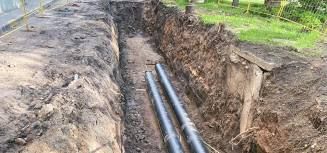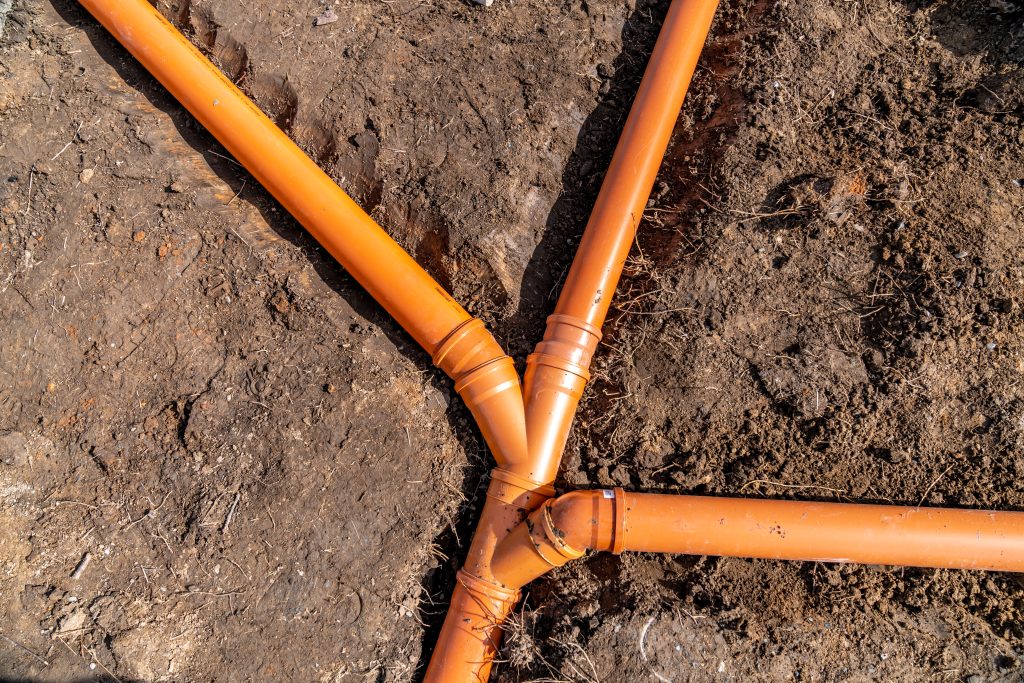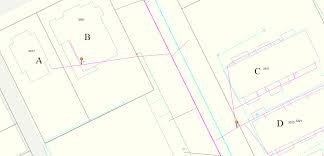Shared Side Sewers: What Every Seattle, King County and Pierce County Homebuyer Needs to Know

When buying a home in Seattle, King County, or Pierce County, there’s one underground feature that deserves your attention: the side sewer. For many properties, particularly in older neighborhoods, side sewers are shared systems connecting multiple homes to the main sewer line. Known as “party sewers” or “common side sewers,” these shared connections come with some unique responsibilities—and risks—for homeowners. Here’s what you need to know to navigate this crucial aspect of homeownership.
The Lowdown on Side Sewers: A Shared System
In King and Pierce County, side sewers are frequently shared among neighboring properties, meaning that multiple homes often connect to the municipal sewer through a single line. At some point, these individual pipes join into one shared lateral line that carries waste to the main municipal system. This can be incredibly efficient, but it also requires coordination and cooperation among homeowners.

Real-Life Example: Helping Our Client Understand Their Shared Side Sewer
Recently, we had a client who purchased a home in Seattle. The paperwork revealed that their property had a side sewer, so we contacted the Seattle Development Office to learn more. With their help, we obtained a property map showing the exact path of the sewer line and the shared connection point with a neighboring property. This clarified which parts of the line were the homeowner’s responsibility and which sections were shared with their neighbor.
Our client asked an important question: Who actually maintains these sewer lines? The answer is a bit complex. In many cases, homeowners are responsible for the portion on their property and any shared sections leading to the main sewer line, while the municipality maintains only the public part of the system. The complex part is finding out what your city will cover. Some will only cover right at the main hook up, other cities will cover to the property line.

Key Risks and Responsibilities of Shared Side Sewers
Owning a home with a shared side sewer has unique considerations. Here are some of the main factors for buyers to be aware of:
-
Shared Responsibility and Costs: If a blockage or damage occurs on the shared section of the line, all connected homeowners must pitch in for repairs. This shared responsibility means homeowners need to work together to address issues, which can delay repairs and increase costs.
-
Maintenance Coordination: With shared side sewers, any repair or maintenance often requires approval from all parties involved. This coordination can be challenging, especially if one homeowner is uncooperative or unaware of their responsibilities.
-
Root Intrusion and Aging Pipes: Older side sewers, many of which are made from clay or concrete, are susceptible to damage from tree roots or general wear over time. Since the costs of repairs are shared, unexpected damage can lead to high expenses that buyers should be prepared for.
-
Legal Considerations: Since side sewers often cross property lines, repairs and maintenance on shared sewers can raise legal questions, particularly regarding access to parts of the line on a neighbor’s property. Knowing the layout of the sewer system and consulting a property map can help clarify these boundaries.

What Homebuyers in King and Pierce Counties Should Do
For prospective buyers in Seattle, Tacoma, and the surrounding areas, here are some essential steps to take if you’re considering a property with a shared side sewer:
-
Verify the Sewer Layout: Contact the city or county development office to obtain a property map or sewer diagram. This can reveal whether the property has a shared sewer and where the shared line is located.
-
Understand Maintenance Responsibilities: Ask about the boundaries of responsibility between you, your neighbors, and the city. This can clarify who is responsible for what and prevent unexpected surprises if repairs are needed.
-
Invest in a Sewer Inspection: Side sewers aren’t typically included in standard home inspections, so it’s worth hiring a specialized sewer inspector. This additional inspection can reveal any existing issues with the line.
-
Budget for Potential Costs: Shared sewer lines in older neighborhoods may need maintenance or repairs, so it’s wise to be financially prepared for unexpected expenses.

Key Takeaway
Side sewers are a hidden, yet essential, part of homeownership in King and Pierce counties, especially in older neighborhoods. Knowing whether a property has a shared side sewer and understanding its responsibilities can save you time, money, and hassle. If you’re buying a home with a side sewer, reach out to local offices to confirm the layout, invest in an inspection, and be prepared for cooperative maintenance with neighbors. With a little preparation, you can avoid surprises and enjoy your new home with confidence.
For more insights and help navigating these unique property features, we’re here to guide you every step of the way!
💡 Curious about more homeownership tips? Follow us at Rethinking Real Estate for insights and advice that keeps you informed! We have more blog posts at
or go to our youtube channel at
Categories
- All Blogs (105)
- Inheritance & Estate Planning (4)
- Auburn real estate (12)
- Bonney Lake Housing Market (4)
- Bonney Lake real estate (12)
- Buyer & Seller Advice (13)
- closing a home sale in Washington (7)
- common mistakes that delay real estate closings (3)
- contingent offer pros and cons Pierce County (1)
- Contingent Offers Explained (1)
- Downsizing & Retirement Living (3)
- Home Buying Advice (3)
- home closing tips Lake Tapps (6)
- home sale contingency Lake Tapps (2)
- Home Selling Advice (15)
- Home Selling Strategies (15)
- how escrow works when buying a house (2)
- how to protect your funds during a home purchase (1)
- Lake Tapps Real Estate (13)
- leaving home to kids (2)
- Pierce County Real Estate (14)
- Pierce County Real Estate Tips (12)
- Real Estate Closing Process (4)
- Real Estate Market Trends (9)
- real estate professionals in Western Washington (7)
- Real Estate Tips (14)
- real estate wire fraud prevention (1)
- senior living (3)
Recent Posts











If you haven't subscribed to our newsletter, you're missing out on great stories like the one above that could be coming right to your inbox every few weeks.
Please use the form to request a subscription.
